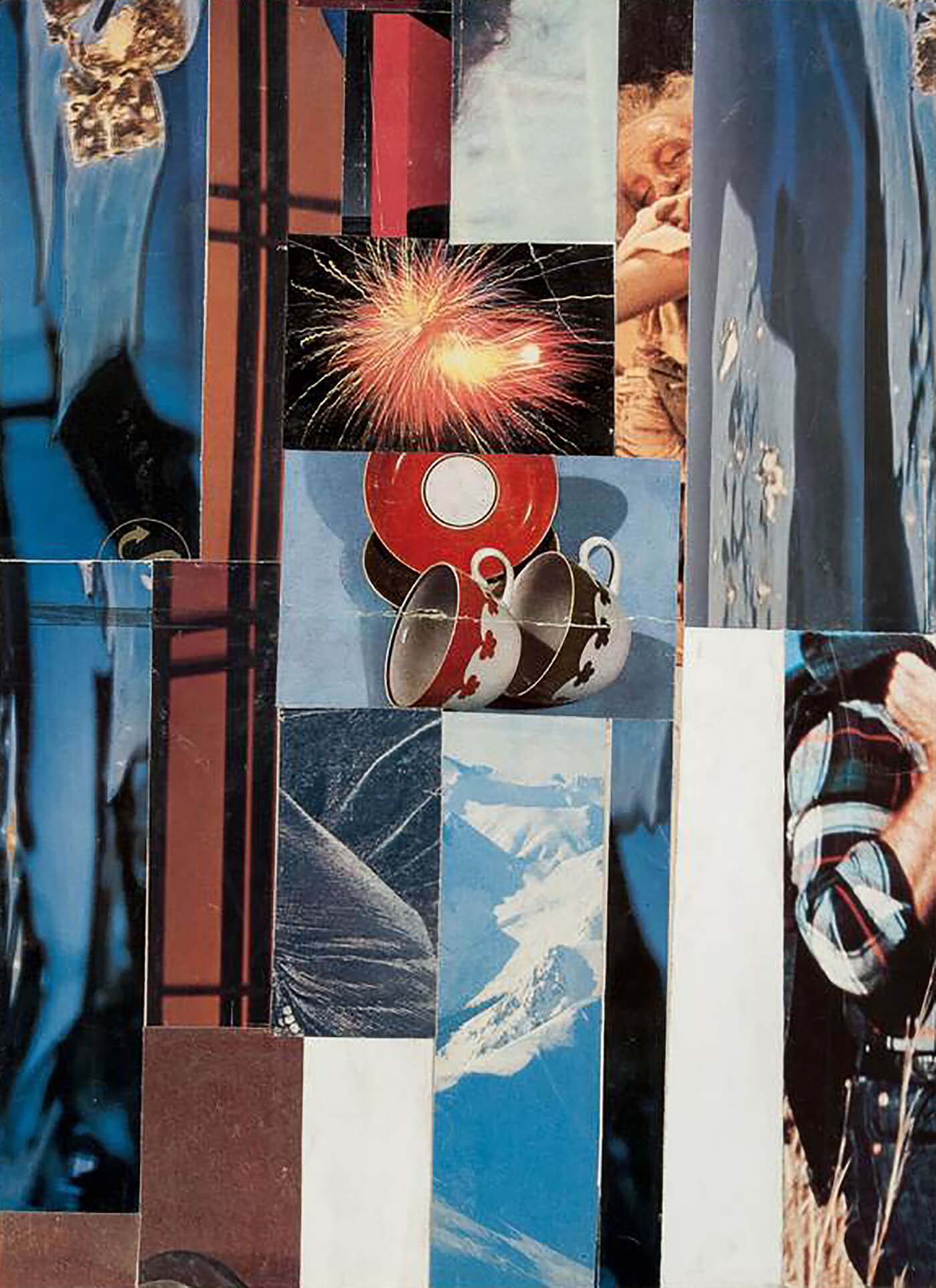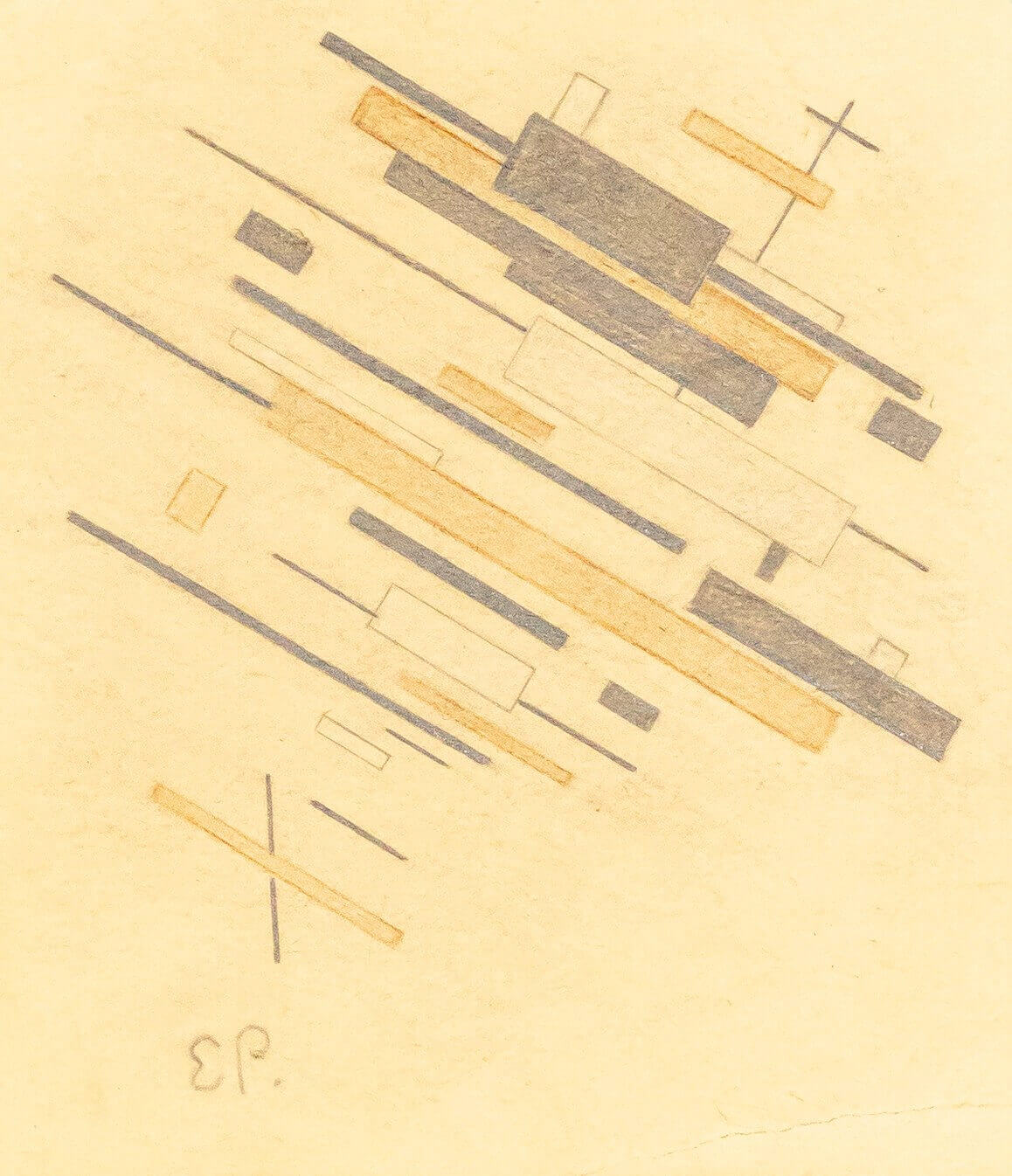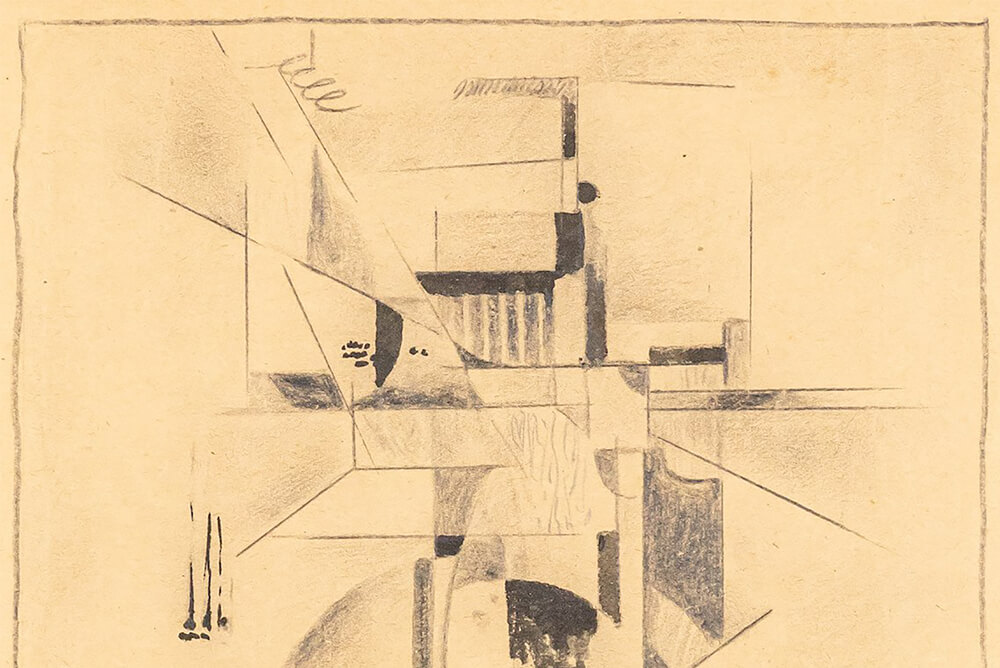Yefim Royak: from student of Chagall and Malevich to recognized designer and decorator
Art-Belarus + Chrysalis Mag | UNOVIS | SUPREMATISM | BELARUSIAN | 21.07.2020
Yefim Royak: from student of Chagall and Malevich to recognized designer and decorator
Art-Belarus + Chrysalis Mag | UNOVIS | SUPREMATISM | BELARUSIAN | 21.07.2020
Together with the 'Art-Belarus' Gallery, we prepared a series of articles about the UNOVIS artists whose works are displayed at the 'Direction of Movement' exhibition. This article is about Yefim Royak, a student of Malevich and Chagall, a talented painter, graphic artist, and designer.

Yefim Royak — 'Composition Suprematism'
Paper, graphite pencil, color pencil / 15 x 20.92 cm / 1920
Yefim Royak — 'Suprematist portrait'
Color pencil on paper, charcoal / 21 x 15 cm / 1920

Yefim Royak
(1906-1987)
How it all started
Yefim Royak didn't intend to be an artist. He was just an ordinary kid from a tailor's family. However, in 1919, everything changed: Marc Chagall, who dropped by his parents, noted the stove with drawings of birds and fish made by the thirteen-year-old Yefim and offered to give him some drawing lessons.
On Chagall's recommendation, Yefim entered the People's Art School in Vitebsk the same year.
In 1920, the teacher's community at the School was reorganized, resulting in Malevich becoming the head teacher and a group of like-minded artists called UNOVIS — 'Utverditeli Novogo Iskusstva' or 'Advocates of New Art' — forming around the founder of suprematism. Yefim Royak was the youngest member of the group: at that time, he was only 14.
In 1920, he participated in his first UNOVIS exhibition in Vitebsk, in 1922 — in Berlin (the First Russian Art Exhibition).
In 1922, the Art School in Vitebsk was closed, and Royak, along with other associates of Malevich, headed to Petrograd.
Petrograd
Between 1924 and 1926, Royak worked as an intern and later as a researcher at the Department of Formal Theory of GINKhUK (the State Institute of Artistic Culture, headed by Malevich).
Though the teacher's impact was evident in Royak's early works, which are full of suprematist forms and techniques, his art was still quite special and unique.
Later Royak returned to figurative painting and even worked from life for a while. Suprematism, though always present, served a decorative background rather than a fundamental basis in all of his works.
Moscow and design
In 1927, Royak moved to Moscow, and in 1928 he had his solo exhibition at the State Institute of Cement Factory Construction. Since the mid-1930s, he was actively involved in design activities: he participated in a large number of design projects, including Soviet pavilions at the International Exposition in Paris in 1937 and the New York World's Fair in 1939.
Yefim Royak was also one of the Paveletskaya metro station designers in Moscow, a member of the Moscow residential development design team and even co-designer of Lissitzky's project of a textile mill.
Since 1934, Yefim Royak worked as an architect-designer at the Vesnin brothers' architectural bureau. There he had an opportunity to study constructivism principles in architecture, which later had a significant impact on the composition and structure of his paintings.
Along with his artistic work, Yefim Royak also created collage paintings, response to the then-popular photo collages. Over time, collage became his primary technique, gradually replacing everything else: the artist created collages until the last months of his life. Royak introduced so-called 'secondary materials' into his works: pieces of newspaper, magazine covers, and photographs.
He never showed most of these works to anyone: the public learned about them only after his death.
After the war
Royak fought in the Great Patriotic War, participated in the battle of Berlin, and received ten government awards. After that, he worked at the All-Union Scientific Research Institute of Glass, where he designed lamps for the Moscow subway stations. The knowledge and skills he acquired at the GINKhUK and later at the Vesnin brothers' studio proved to be very useful and influenced Royak as decorator, designer, and architect.
In 1954, he was appointed the Chief Artist of the Kiev district of Moscow and worked in this position for 20 years.
The 1960s-1970s
Until the end of his life, Royak continued to make art, but very few people knew about it. He did not participate in exhibitions, was not close to the nonconformist artists. In fact, he made art secretly and for himself. His works remained 'unofficial': he didn't show them even to his closest friends and never sent them to exhibitions.
After death
Yefim Royak died in Moscow in 1987. In 1991, solo exhibitions in his memory were held in Germany. His works are usually displayed at exhibitions of artists of Malevich's circle.
Besides the Tretyakov Gallery, Yefim Royak's works are exhibited at the National Art Museum of the Republic of Belarus.
Other works of Yefim Royak
Other works of Yefim Royak

Composition with Suprematist elements / cardboard, collage / 51 × 41 cm / 1974

Still life / cardboard, magazine clippings, glue, collage / 25.2 × 18.7 cm / 1983

Composition with two cups / cardboard, printing paper, collage / 39 × 29 cm / 1970s
All materials are taken from the personal sources of the 'Art-Belarus' Gallery. Some of the images are taken from the Sotheby's site.
Reprinting of material is allowed only with the permission of the publisher.
If you found a mistake or would like to offer an addition to the published materials, please inform us.
Other Materials of the UNOVIS Series
Other Materials of the UNOVIS Series
FOLLOW US
INSTAGRAM TELEGRAM TIKTOK FACEBOOK YOUTUBE
© Chrysalis Mag, 2018-2025
Reprinting of materials or fragments of materials
is allowed only with the written permission






